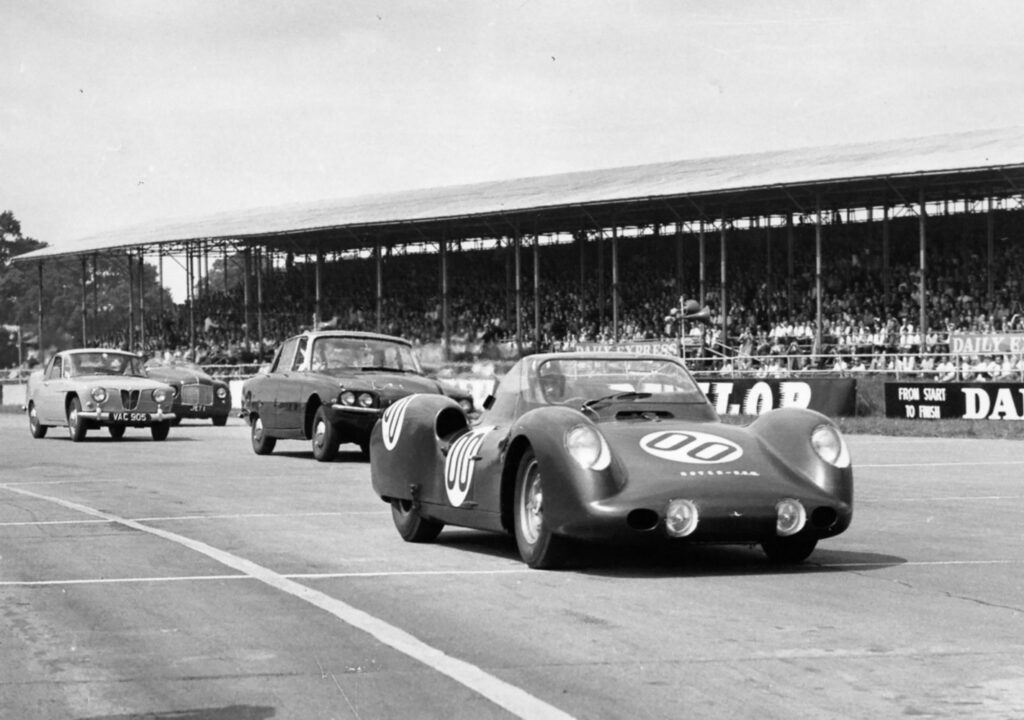
Coventry Society founder member, Paul Maddocks, worked for many years for the City’s Museum Service, even before the Transport Museum was established. In this role he was involved in displaying some of the city’s most interesting technologies. One theme which caught his imagination was industry’s short flirtation with jet cars. Paul writes……
Many of you may know that Frank Whittle invented the Gas Turbine jet engine! You may also know he was born in Coventry! But did you know it was Coventry Museum that saved four of the only five gas turbine cars that the Rover Car Company ever made?
In 1975 I started working at the Herbert Museum as a designer / artist. During my first year there we put on an exhibition of the Rover Gas turbine cars. It was called “Whispering Revolution’.
One half of the ground floor main gallery was cleared for the exhibition. Peter Mitchell, Senior Keeper Industry and Technology, wanted to show off the museum’s latest collection.
These were the gas turbine cars that the Rover Car company had been experimenting with. As I understand it, the prototypes were on their way to be scrapped. The research into gas turbine cars had been cancelled. This was not long after British Leyland took over Rover and was making cuts across the many companies that it had taken over.
I had known Peter Mitchell from 1968/9 when he came to the Coventry Art College and to my Technical Illustration course. He asked us if we would like to draw various items from the Herbert Industrial Collection?
We were allowed to explore the industrial store in Much Park Street at the former Franklin’s Ribbon Weaving Factory. Sadly, this no long exists as the Coventry Lanchester Polytechnic bought the land and buildings for a car park.
Peter had worked at the Science Museum before moving to Coventry and had known the first gas turbine car that Rover had produced, the ‘Jet1’. This car is still in the Science Museums collection.
The “Jet1 prototype” was unveiled in 1950 was the world’s first car powered with a gas turbine engine. It was a modified Rover 75 car with a gas turbine engine mounted in the rear of the car. It was an open two-seat tourer with the engine positioned behind the seats, with air intake grilles on either side of the car and exhaust outlets on the top of the tail. It was able to travel just over 150 miles an hour.
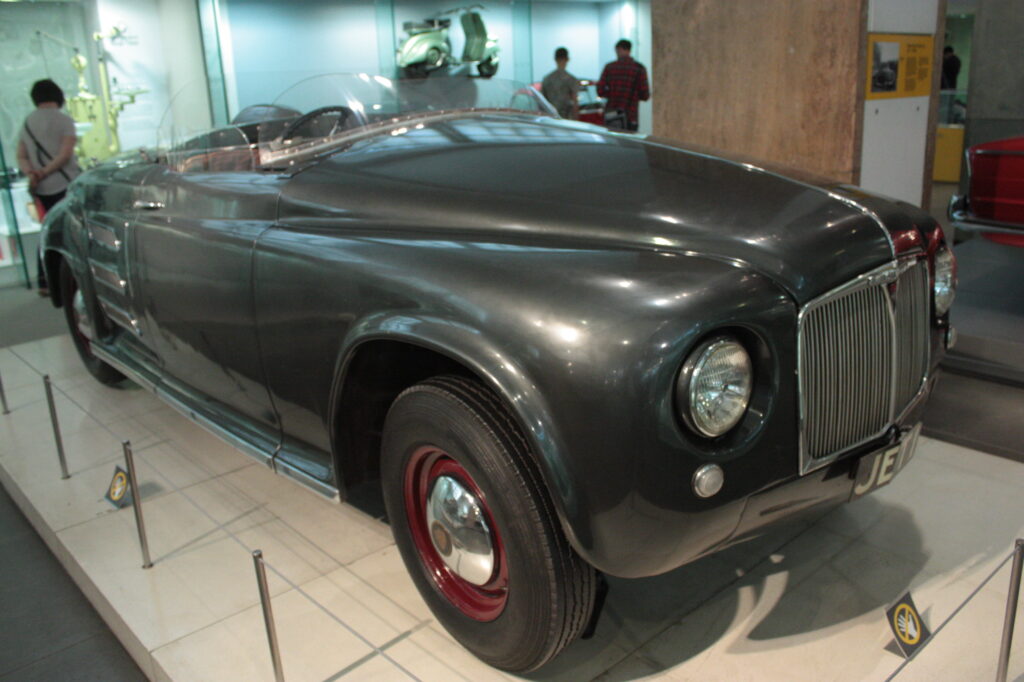
You can see a short BBC archive film about the car here.
Peter Mitchell had known all the main managers and owners of car companies in and around the city. When he heard about the closing of the Rover gas turbine development department, he contacted Mr Bernard L Jackman, the then Managing Director of the Rover Company. Jackman gave four prototype cars and various engines and ceramic heat exchanges to the Coventry Industrial Collection at the Herbert Museum. He also gave them the bonnet from the first Rover BRM Le Mans jet racing car.
The 1975 exhibition had the 1950 Jet 1 car from the Science Museum, and the 1956 Rover T3 car, the Rover T4, the !965 Rover BRM Le Mans car and a utility prototype car plus various other bits and bobs.
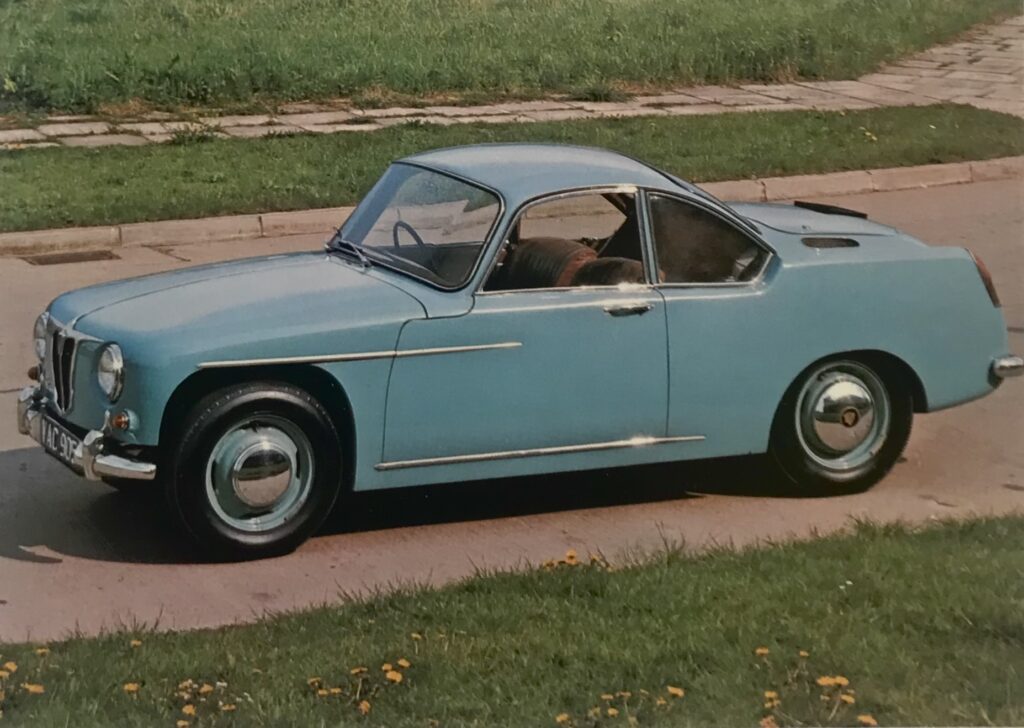
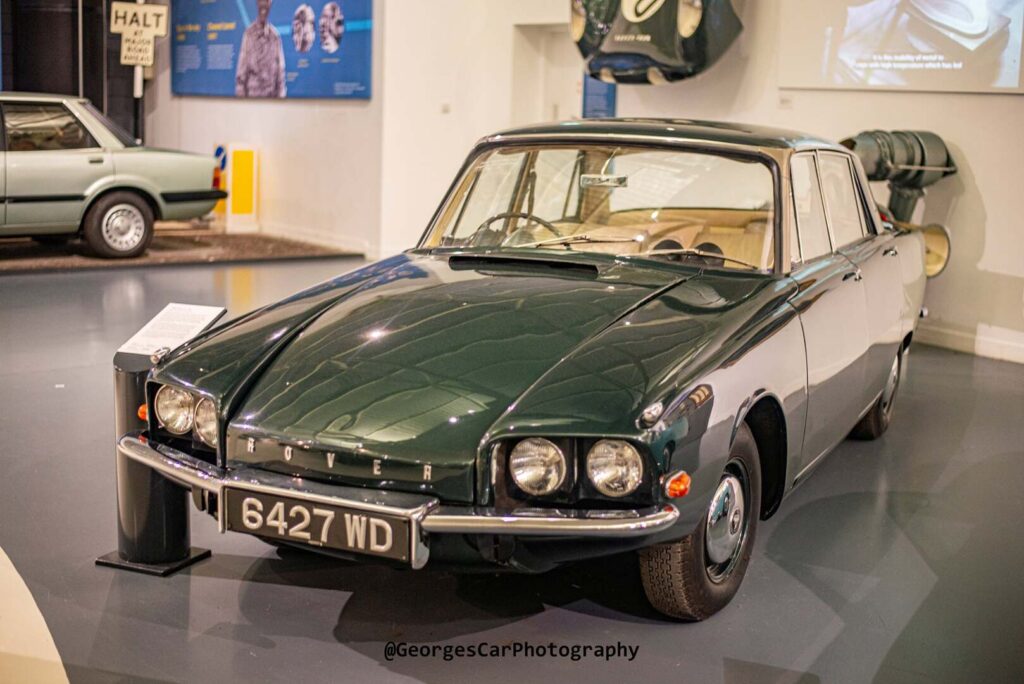
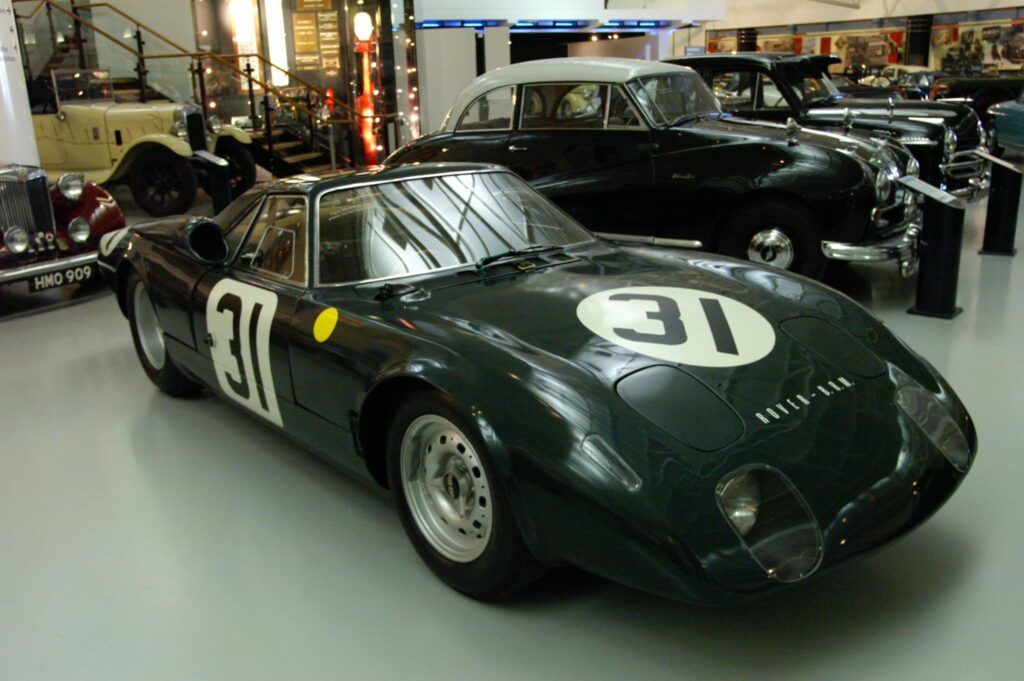
Two years later in 1977 the Queen came to Coventry as part of her silver Jubilee. She visited the Cox Street Working Men’s Club, the oldest in the country. The museum put 50 vehicles from the collection on display along Priory Street, opposite the new Cathedral, so the citizens and the Queen could see them.
I was involved with producing a leather-bound book to give the Queen about the vehicles on display and in the parade line up of vehicle. The book was also available for display and sale.
The Museum of British Road Transport, now known as the Coventry Transport Museum, had them on display for around 25 years.
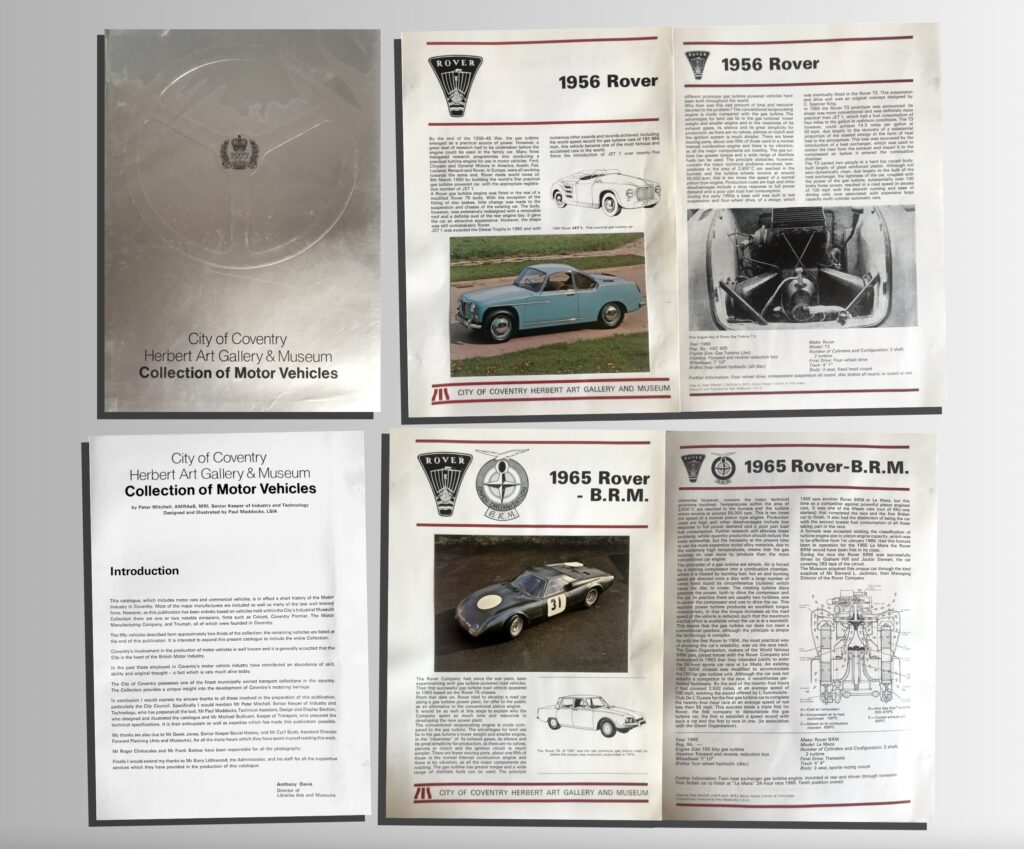
All of the cars are now on display at The British Motor Museum in Gaydon, Warwickshire. This was due to the Gaydon museum borrowing them for an exhibition, then claiming ownership.
Museums and councils do not like getting into expensive legal cases, so the cars are still on display, but not in Coventry.
Although Coventry doesn’t have the Rover jet cars, it does have a 1966 Leyland/ Noel Penny Turbines Lorry. This unique vehicle was purchased in 1994 from the Noel Penny Turbine Limited of Coventry with the aid of a Museums and Galleries Commission Prism Grant.
The company was established by Noel Penny, a former designer and chief engineer from Rover Gas Turbines in Solihull. The company employed hundreds of engineers at its works at Siskin Drive, Toll Bar End in Coventry. It eventually went into receivership in 1991, with the rights to the engine designs being sold off.
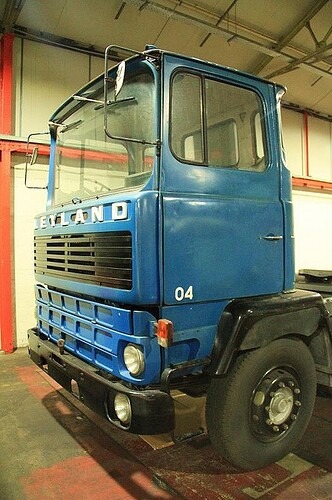
The Gas Turbine lorry is in the Museum store.
Gas Turbines are great at producing large amounts of energy from a fairly small engine and were found to be good as mobile generators.
There are a number of problems with using gas turbine engines in domestic cars, but the biggest problem was that it got very hot, especially the exhaust.
Peter Mitchell told me that when they borrowed the Rover ‘JET1’ from the Science Museum they pushed it out of the museum and they then started the gas turbine engine up outside. But it was close to the rear doors of the museum and the heat from the cars exhaust bubbled the paint!
As you can imagine this was a bit dangerous, even when the exhaust was on top of the vehicle. Later vehicles were able to get the temperature down with heat exchangers.
This made the hot gases return to the intake by a strange mechanism with two large spinning porcelain discs with hundreds of tiny holes through it like a large honeycomb. This took the hot gases from the exhaust outgoing vents and then flipping it around into the cold air intake vents.
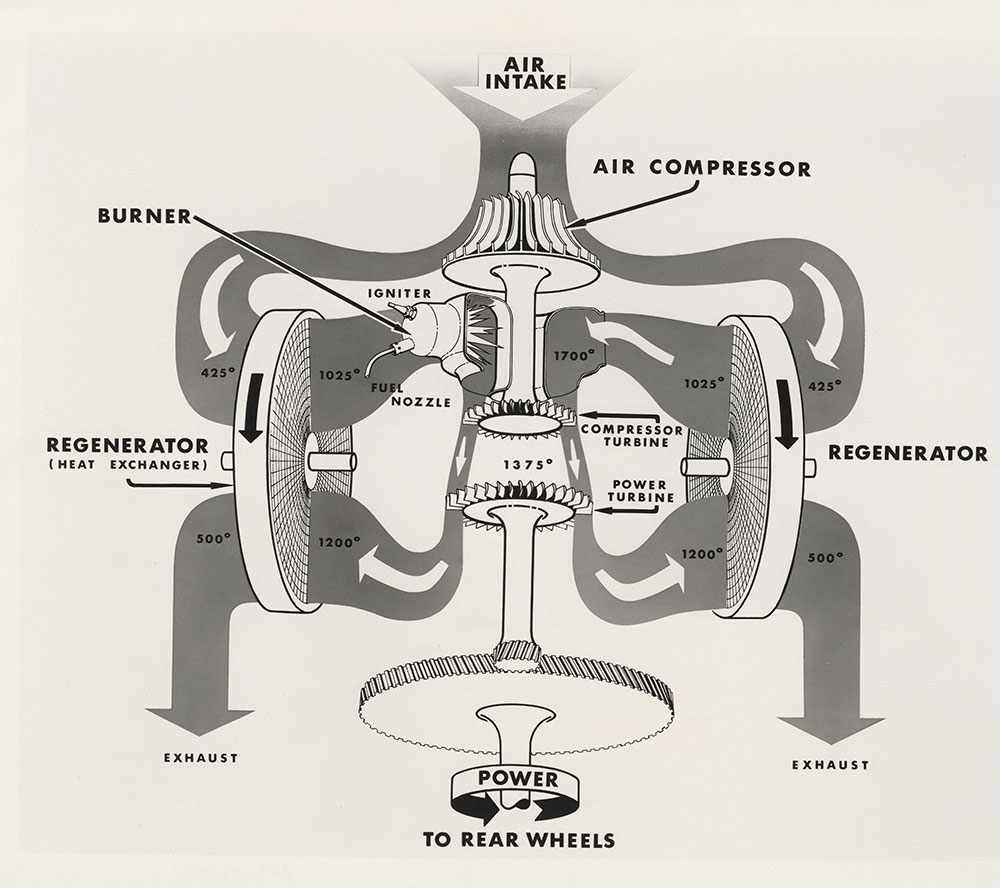
The porcelain heat exchangers (also called regenerators) were very expensive to manufacture especially as they were porcelain. This was to withstand the extreme heat changes. There were very few of these prototypes.
